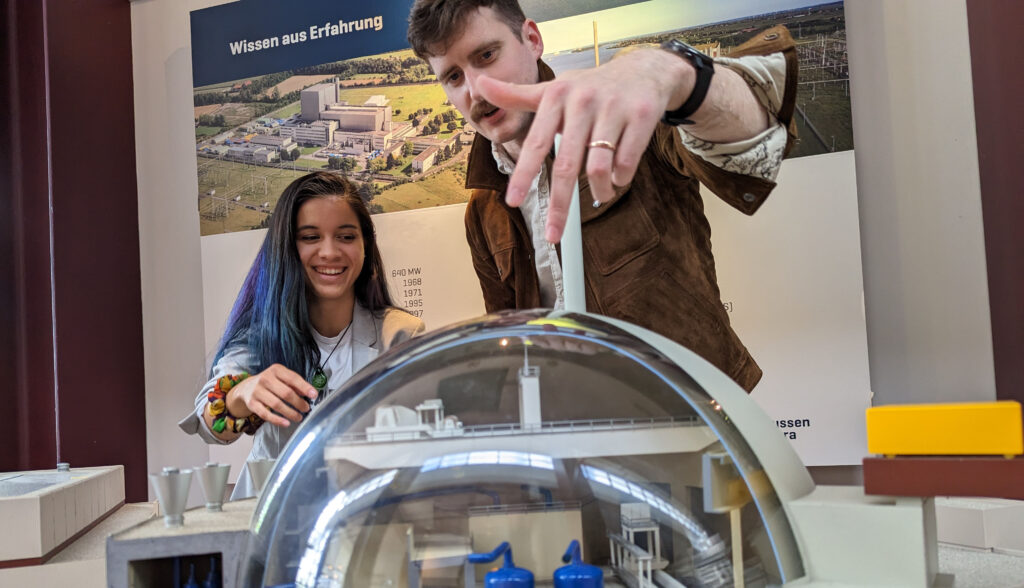On 31 December 2021, the Brokdorf nuclear power plant was shut down. Just a few weeks later, unforeseen developments shook the world – and nuclear energy was back in the spotlight. Yet the Brokdorf plant has become strangely quiet. Is this silence rather cemetery peace or Sleeping Beauty slumber? Activists Alyssa Hayes and Mark Nelson traveled from the US to find out. Their first impression: the plant is simply beautiful.
German version here
»It breaks my heart to see a great climate protector shut down decades before his time«, says Alyssa Hayes. The young PhD student in nuclear engineering at the University of Tennessee has been campaigning for the lifetime extension of nuclear power plants in her home state of Illinois for many years – and with success. Public opinion in the USA changed much earlier than in Germany.
»The destruction of this plant borders on sabotage.«
The contact with Alyssa and Mark came about through the »Brokdorf remains« university project at the Hamburg University of Applied Sciences. In the summer of 2023, the two took part in a tour of the Brokdorf power plant. Mark’s conclusion: »The plant is in excellent technical condition and is one of the most reliable and powerful plants in the world. Any other country would be proud of its engineering prowess and would be happy to have access to this potential in times of multiple crises. I think the destruction of this plant borders on sabotage.«

Like Alyssa, Mark is a nuclear engineer. And like Alyssa, he supports campaigns to keep nuclear power plants open. For example, he and his fellow campaigners recently won a life extension for the Diablo Canyon nuclear power plant in California. »Everything speaks in favour of reassessing the situation at Brokdorf and restarting the intact plant. A restart is technically possible. There are even enough fuel elements left for one year of power operation. What is missing are strong signals from the politicians.«
Huge amounts of emission-free energy possible
Without political support, PreussenElektra will have no choice but to dismantle the plant. But nothing irreversible has been done yet: The permits to start dismantling are still pending. After the tour, Alyssa and Mark walk along the Elbe embankment and gather impressions of the community of Brokdorf. They hear first-hand how important the plant has been to the region and that most of the local people have a positive view of nuclear power.
Mark sees the plant’s potential as an important part of a balanced energy strategy: »This power plant was created to generate huge amounts of energy. We’ve learned that it could supply almost all of Hamburg with electricity. Decarbonization, however, means that new energy sources will attempt to be tapped for transport and heating. In this context, Brokdorf staying online would become part of the hydrogen economy – nuclear power plants around the world are being built or upgraded for this purpose.«

»There is still time for Germany to reverse the closure of this clean source of electricity, most of which is being replaced by fossil fuels«, says Alyssa. »Germany wouldn’t have to go back to lignite if it kept its nuclear power stations. We have to take climate change seriously.«
Indeed, German politicians and much of the public have put climate change on their agenda as a serious threat. It even sees itself as a role model for other countries. But what about the outside world? Instead of being a role model, Germany is increasingly serving as a cautionary tale in energy policy. Mark is convinced that Germany will return to nuclear power. The only question is: when?
